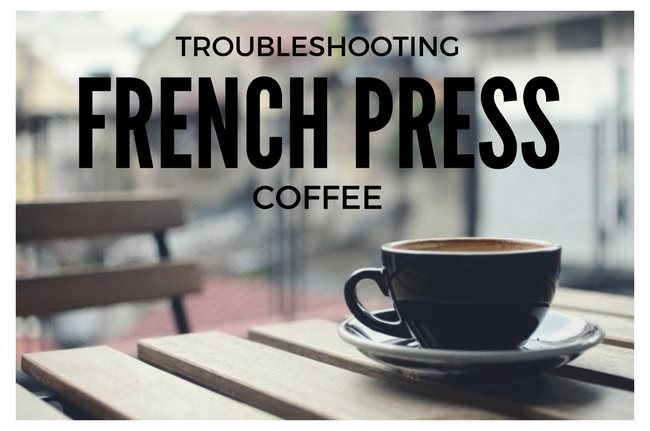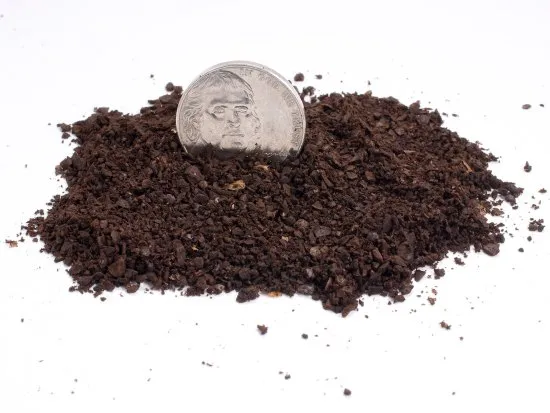
This article expands the troubleshooting table inside the French Press Coffee Tutorial. I’ve brewed a lot of coffee using the French Press. Along the way, I’ve developed a checklist of steps to improve the taste. Some variables are easy to correct, and some require a little effort.
Before you start tweaking, it is important to get the basics correct. The steps listed below should be followed in sequence. There is no point in adjusting the grind if your water quality is poor.
#1 Water Quality
There are a few articles on this site that cover water quality. I have a simple rule to measure water quality: Drink the water by itself. Does it taste good? If so, then that is good enough. If the water doesn’t taste right on its own, then your coffee will probably taste off as well. Seek out a good water source before you start to brew your coffee.
#2 Brewing Temperature
When brewing French Press coffee, you want the temperature off a boil. This equates to 195-205 °F or 90.5-96.1 °C. For lighter roasts, aim to be closer to 205°F. For darker roasts, strive for 195°F. A kettle like the Bonavita will let you dial your desired temperature. Not only is that good for coffee, but it is also a necessity for some teas.
#3 Fresh Coffee
Coffee is a perishable item. As it ages, it loses flavor. How much flavor loss is acceptable is up to you. I used to only drink coffee that was less than 10 days old, but in recent years, I’ve been surprised by some lighter-roasted coffee that still tasted very good weeks after roast.
A general rule is that the darker the coffee is roasted, the shorter the window of freshness will be. A light Scandinavian roast might stay flavorful for more than four weeks, whereas a dark French roast could begin to go stale less than one week after roasting. For a more detailed discussion on this topic, see our article Hacking Dark Roast—Tips on Brewing a Better Bold Coffee.
If you don’t roast your own coffee, then look for a roasted date on the bag of coffee before purchasing. Grocery stores are notorious for putting stale coffee in front of fresh bags. Just dig deeper into the pile looking for a fresher date. If a roaster doesn’t put a roasted date on the bag, I assume they are hiding something and the coffee is stale. As you attempt to make a perfect cup of French Press coffee, you’ll want to eliminate as many variables as possible. Having a high-quality fresh coffee to work with will increase your odds of success.
#4 Grind Size
A French Press uses a coarser grind than drip coffee. If the grind is too fine, the coffee will taste bitter. If the grind is too coarse, the coffee could taste weak. When it comes to grinding, a coffee drinker has two choices.
You can have it ground at the time of purchase using a commercial-grade grinder or grind it yourself. Having it ground at the roaster or grocery store will guarantee that the size is perfect; however, the flavor compounds in the coffee will start breaking down immediately. You’ll be trading a bitter coffee for a stale coffee. In other words, ideally, you’ll want to get a grinder. Once you have your grinder, dialing in the perfect grind takes just a little practice.

Coarse Coffee Grind is most commonly used for French Press coffee. Some coffee drinkers will prefer it a little finer, but this is a good starting point.
#5 Steep Time
The most common steep time recommended for French Press coffee is 4 minutes. I have talked with many coffee professionals, and the time they use them varies from 3 to 6 minutes. After brewing thousands of pots of press pot coffee, my recommended time is 3 ½ minutes. In my opinion, the coffee tastes brighter and more flavorful at the lower end.
I’ve found that the longer the steeping time, the more the body takes over the flavor. I’m in the minority on this topic, so this will require your own experimentation. Another opinion is to adjust the steeping time based on the actual coffee. If you want to highlight the bright flavors, do a 3 ½ minute steep. If you want to develop a richer body, add an extra minute.
#6 Dosage
Getting the dosage correct is the last step because the other steps tend to have more fixed rules. Although there is a recommended dosage, it will be a personal choice. The debates over water quality, coffee freshness, grind size, and brewing temperature are over. Steep time has a sliding window of +/—60 seconds. So, the only real variable left is the dosage.
The reason dosage can be tricky is that people new to press pot coffee will often perceive the taste as “too strong.” French press coffee is supposed to taste richer. If that richness comes off as being “too strong,” then those new to press pot coffee may experiment with a lower dosage and then gradually move the dosage in line with standard recommendations over time. But you don’t want to go too low, or the coffee will taste bitter.
What is the dose? According to Bodum, the most popular French Press coffee maker manufacturer, for each 4 oz. cup (1.25 deciliter), put one rounded tablespoon of coarse-ground coffee into the pot. I advise starting with this dose and then adjusting it up or down.
Another dosage option is to weigh the beans using a kitchen scale. The common ratios used are covered in the French Press Coffee Tutorial.

The coffee dosage chart photo was taken at Batdorf and Bronson in Olympia, WA.
#7 Slow Press or Scrape For a Cleaner Cup of Coffee
There will be coffee sediment in a mug of French press coffee. When the first version of this article was written, my only advice was to make sure the filter had a snug fit and then avoid drinking the last mouthful from each mug. Then I learned this trick from barista Christos Andrews. Thirty seconds before the steep ends, slowly press down the French Press plunger. It should move so slowly that it takes a full 30 seconds till it hits the bottom. This gentle press method results in a cleaner cup of coffee.
Another tip for a cleaner cup is to scrape some or all of the coffee grounds from the top of the French Press before pressing down. Using a large spoon or two, remove the grounds on the top. Then, proceed to press the filter down. This does require more work, but I have noticed that the coffee’s flavor is brighter using this method. The downside is that the scraping method might make the coffee taste too clean or weak.
I prefer the slow press technique over scraping, but you could use both.
#8 Time to Buy a New French Press?
If you have tried all the steps above and your coffee still doesn’t taste good enough, the filter may no longer fit tightly enough on the French Press. The filter can become loose or even bent. If it is time to replace your French Press, check out our guide Buying a French Press – Picking the Right One.
#9 Time to Try Another Brewing Method?
After all these steps, you may discover that you just don’t like the taste of French Press coffee. If you like the richness but want something cleaner, look into the Clever Coffee Dripper or the Bonavita Immersion Coffee Dripper.

*Clever Coffee Dripper
*
Last Words
You may like certain coffee types more than others in a French Press. Experiment. I don’t like anything dark-roasted in a French Press. Brighter coffees from East Africa or Central America excel in the press pot.
Good luck with your French Press brewing.
Resources
Buying a French Press – Picking the Right One – A guide to help you decide which French Press coffee brewer is best for you.
French Press Coffee Tutorial – INeedCoffee brewing tutorial.
Making Cold Brew Coffee in a French Press – You can also use your French Press.
Keeping Your French Press Clean – Ways to get your French Press super clean.
Photo by Karl Chor